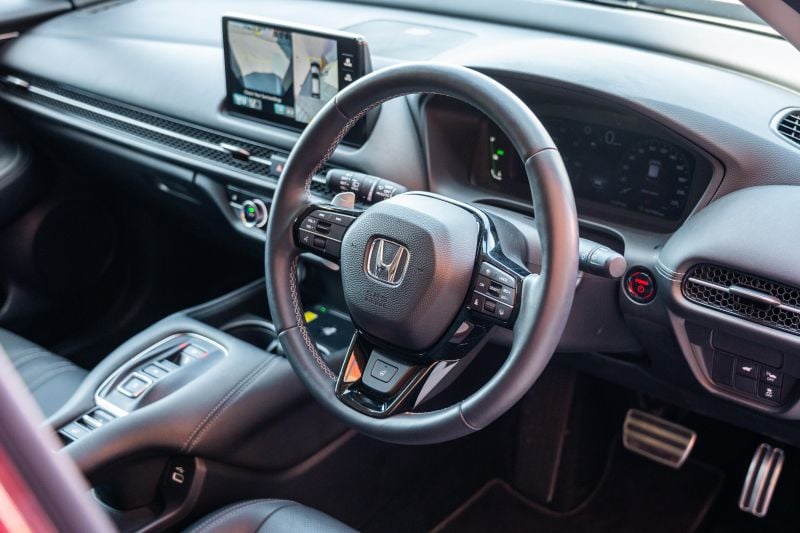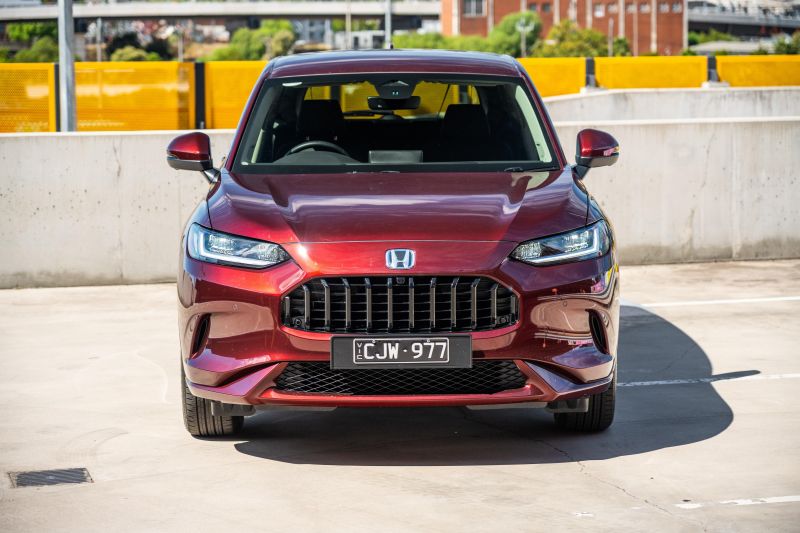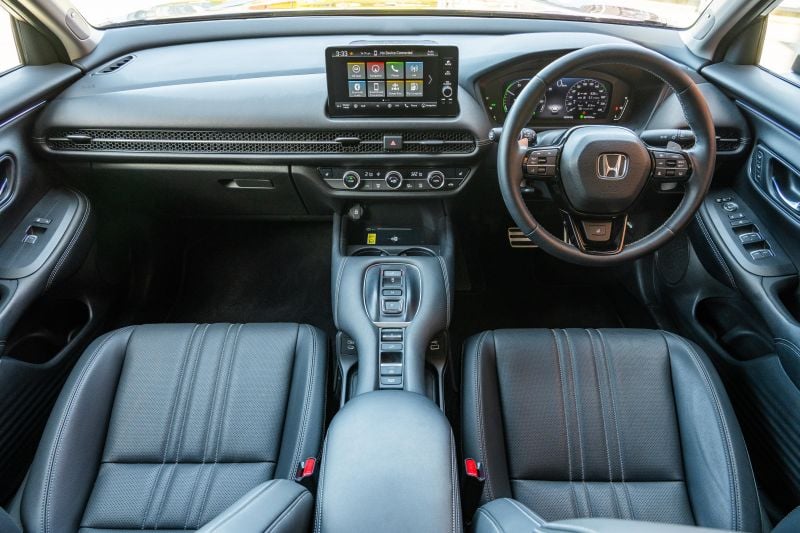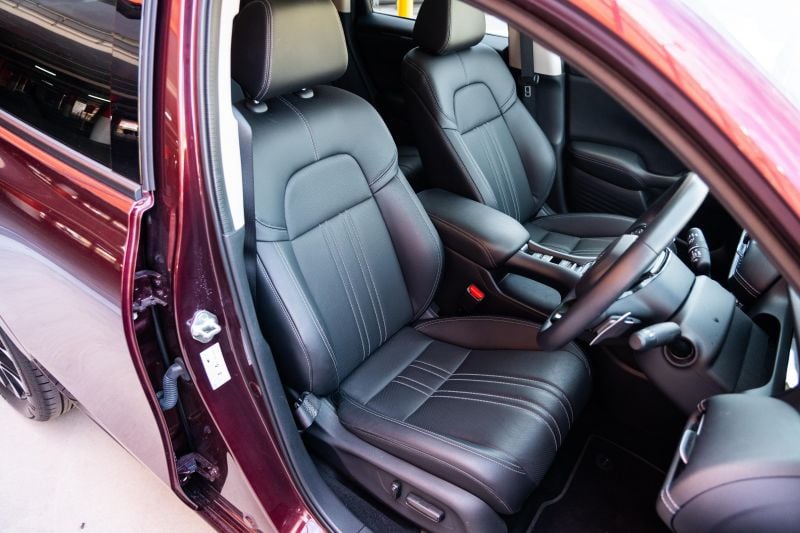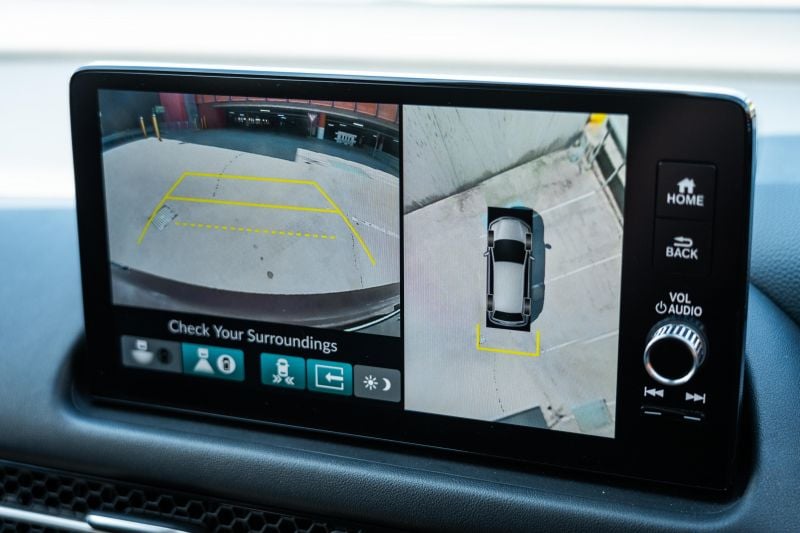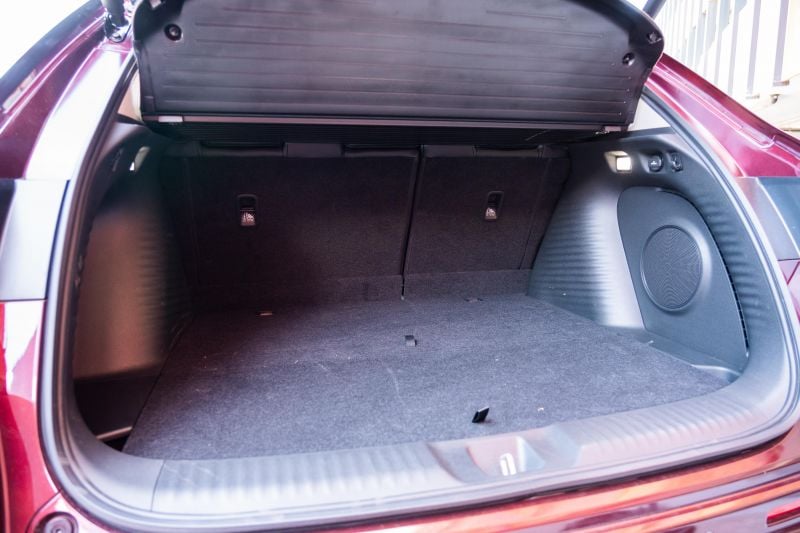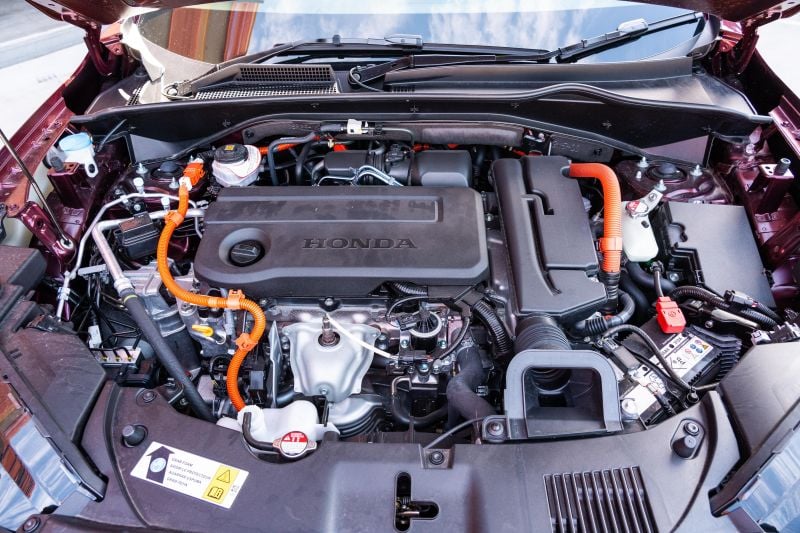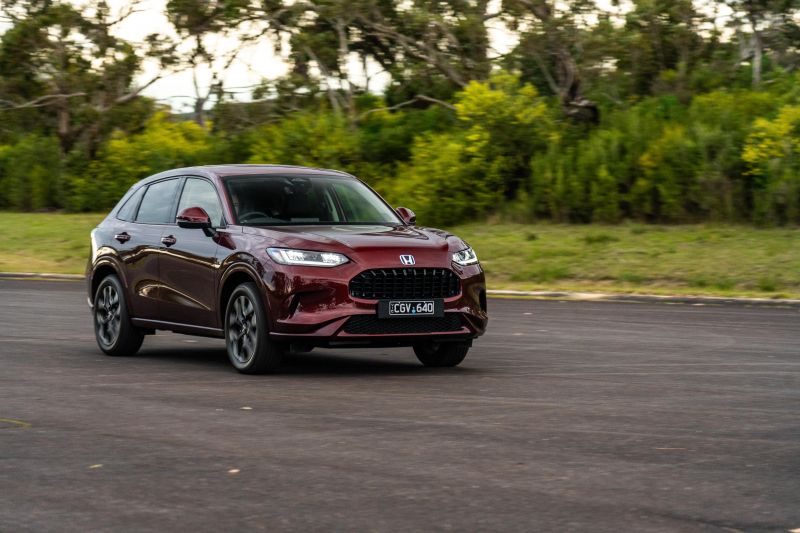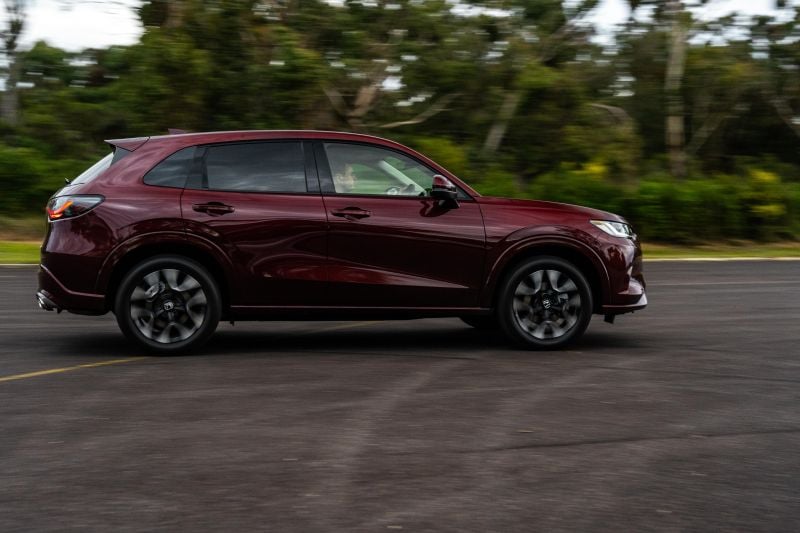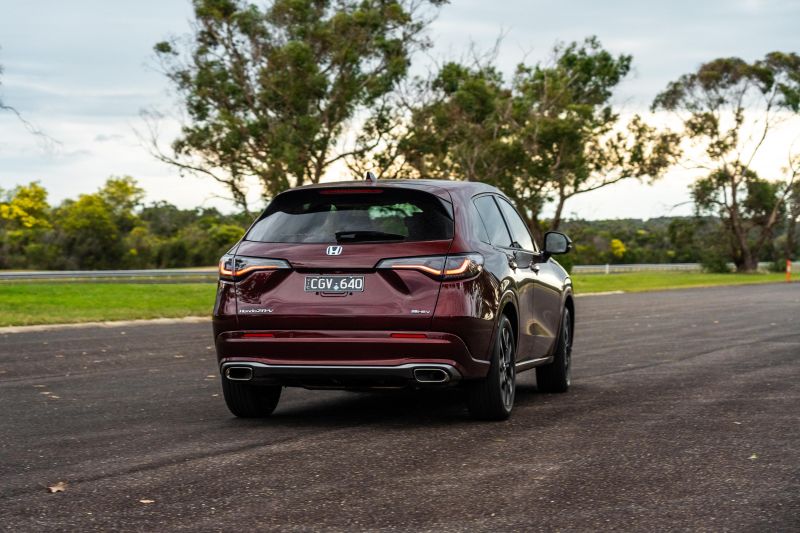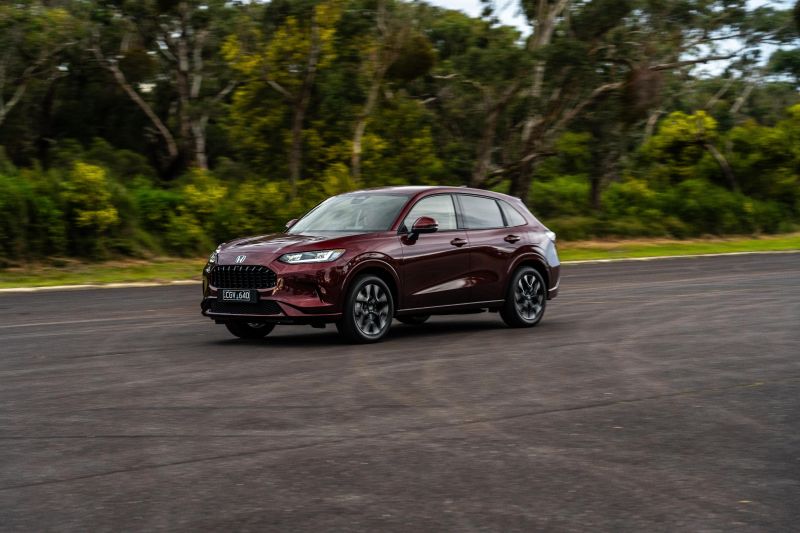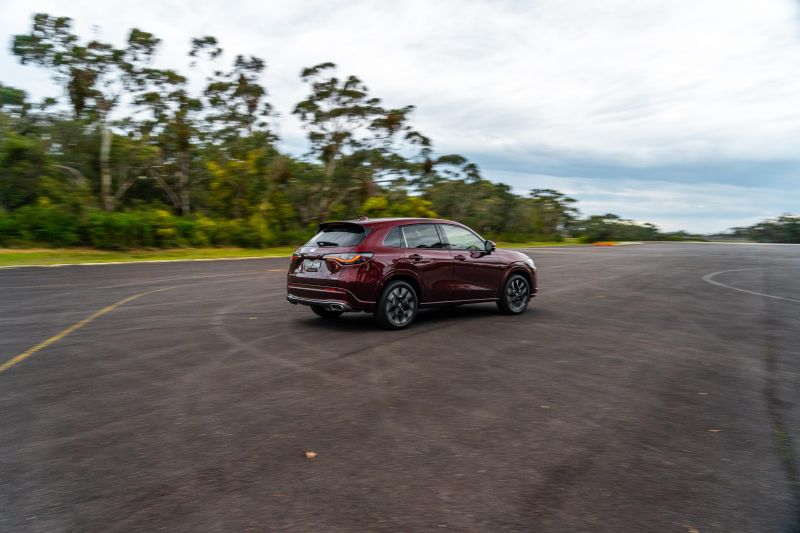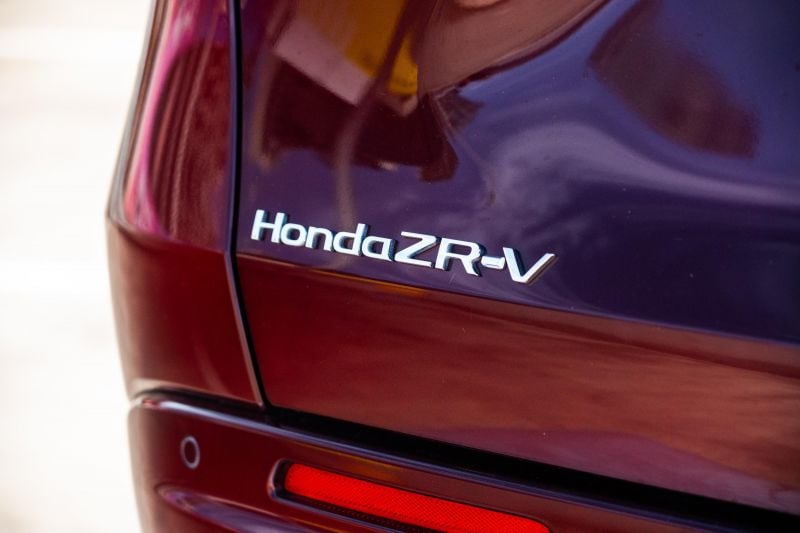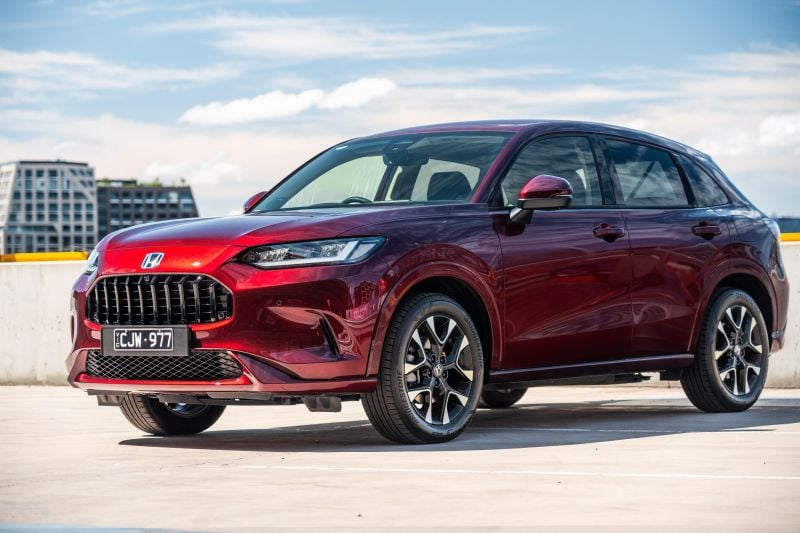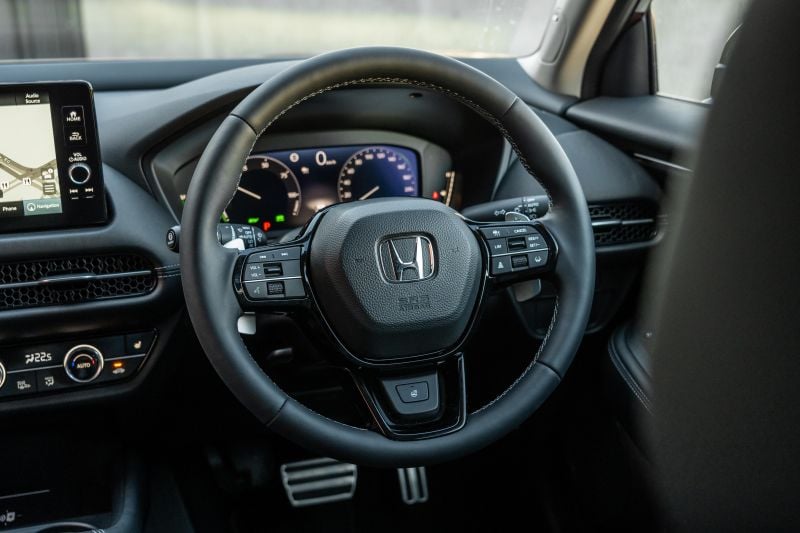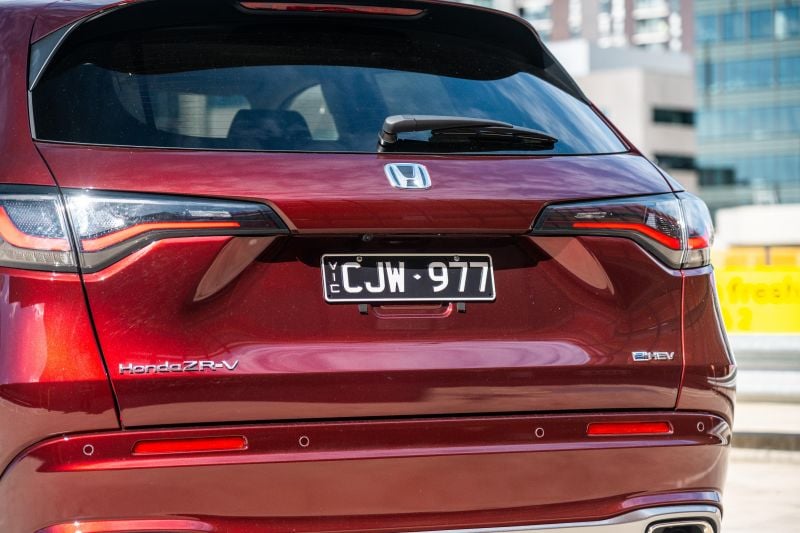When you think of the modern mid-size SUV, you probably think of growing families and mature drivers who appreciate grown up things like an elevated seating position and ground clearance.
But Honda sought to change that with the introduction of the ZR-V back in 2023. Rather than targeting the same old crowd, Honda blended elements of the HR-V, CR-V and Civic into a new nameplate aimed squarely at Generation Z.
With funky styling and a starting price south of $40,000, the ZR-V is still pitched as a car for big kids… except maybe this one.
While the base ZR-V VTi X+ received a welcome $2000 price drop for 2025, the flagship e:HEV LX remains a $54,900 proposition, and that’s before on-road costs.
Now, as a member of Gen Z myself, I’d hardly call that a friendly price tag for car buyers in their 20s.
And it’s a price point that also exposes the hybrid ZR-V to competition from all angles.
On one side there are segment staples like the Toyota RAV4 and Nissan Qashqai. On the other, a new wave of SUVs from China, both petrol and electric.
So where does that leave this top-spec ZR-V, now that it’s not so cheap and not so fresh? Let’s find out.
How does the Honda ZR-V compare?
View a detailed breakdown of the Honda ZR-V against similarly sized vehicles.

Honda
ZR-V
How much does the Honda ZR-V cost?
The Honda ZR-V range now opens at $37,900 drive-away for 2025, thanks to a $2000 price cut. However, pricing for the other three variants remains unchanged from last year.
| Model | Drive-away price |
|---|---|
| 2025 Honda ZR-V VTi X+ | $37,900 |
| 2025 Honda ZR-V VTi L+ | $43,400 |
| 2025 Honda ZR-V VTi LX | $49,000 |
| 2025 Honda ZR-V e:HEV LX | $54,900 |
The flagship e:HEV LX is priced to compete with the Toyota RAV4 XSE and mid-spec versions of the Mazda CX-5 and Nissan Qashqai.
To see how the Honda ZR-V stacks up against its rivals, use our comparison tool
What is the Honda ZR-V like on the inside?
If it’s a premium experience you’re chasing, this top-spec ZR-V has you covered.
The interior of the e:HEV LX is plush for the price point, brimming with soft-touch materials and high-end features.
Exhibit A: the front seats. Trimmed in genuine black leather, the driver’s seat is super comfy with bucketloads of cushioning and rib-hugging side bolsters.
There’s plenty of electric adjustment for drivers of different shapes and sizes, plus three-stage heating to combat those cold winter mornings. While seat ventilation is missing from the equipment list, the front chairs are perforated to help you avoid a sweaty back in the summer heat.
The soft, thick steering wheel is also heated in the e:HEV LX. Soft, padded leather covers the centre console, central tunnel and sections of the door cards – no excuses for sore elbows at the end of a drive, then.
Sure, the roots of a far cheaper SUV can still be found if you go hunting for them, but who really cares what the door sills are made out of anyway?
While the top-spec ZR-V is undeniably comfortable and well-appointed, it’s not the only vehicle in the medium SUV segment to boast those traits. The new Nissan Qashqai presents just as well if not better in Ti-L guise, with Alcantara trim and massaging front seats.
Honda has also done well to distinguish the ZR-V from its CR-V and HR-V siblings in the interior design department, introducing unique elements like a tiered central tunnel and curved panels. And despite the trends of today, there’s no gloss black to be seen here – hallelujah!
As a package, the ZR-V is far more interesting that the aforementioned CR-V and HR-V. In top trim, it’s a step up in material quality too, although a bit of wobble in some interior panels belies that.
Creativity can come at the cost of functionality, but that’s not the case here. The ZR-V retains a straightforward layout with user-friendly controls, including physical climate controls with old-school buttons and rotary dials.
That familiarity extends to the interior technology suite, which consists of a small 9.0-inch touchscreen infotainment screen, and a 10.2-inch digital instrument cluster.
There’s nothing particularly unique or standout about either, to be frank. In particular, the infotainment system looks a bit old-hat and lacks the processing power offered by rivals.
However, it’s easy to navigate and comes with essentials like wireless smartphone mirroring and native satellite navigate.
In addition to wireless Apple CarPlay and Android Auto, wired USB-A and USB-C connections are located under the central tunnel. A wireless phone charger can be found behind the cupholders.
The ZR-V also features first-generation Honda Connect, the brand’s version of connected services. Within the Honda Connect app you can turn the lights on and off, remotely lock the doors, geo-locate your car, and check your fuel level, among other functions.
Like the infotainment system, the digital instrument cluster is rudimentary and unimaginative, but functional. A pair of traditional gauges dominate the standard setup, each with customisable inset readouts encompassing in-car audio, fuel efficiency, trip information and ADAS.
All information is displayed clearly, but there’s an absence of creative flair. Creativity isn’t so relevant when it comes to cabin storage, and the ZR-V houses a healthy amount of nooks and crannies.
The door bins are on the smaller side but perfectly shaped for a drink bottle, while the centre console is nice and deep. With that said, the glovebox is undersized and the tray between the front seats is deceptively narrow.
Moving back to the second row, the ZR-V isn’t as roomy as some of its key rivals. The Toyota RAV4 and Nissan Qashqai will seat five full-size adults in relative comfort, but this hybrid Honda is a little more restrictive.
Leg- and headroom are reasonable if not outstanding, and the seating arrangement is better suited to passengers with short legs and a longer torso. The rear seats themselves are supportive, heated, and slightly reclined for comfort over longer journeys.
The cozy second row in the ZR-V is enhanced by a swathe of useful amenities including two USB-C outlets, air vents, map pockets and a centre armrest with integrated cupholders.
In bad news for prospective buyers seeking space, the sloping roofline of the ZR-V also compromises boot space. Honda claims 370 litres of cargo capacity for the ZR-V, a figure that’s bested by most competitors including the Qashqai (504L), RAV4 (542-580L), Sportage (586L), and even the smaller Hyundai Kona (407L).
However, there’s more practicality here than you might think. The powered tailgate opens high, revealing a large square boot aperture free of an annoying load lip.
There are hooks for your grocery shopping and a 12-volt power socket, as well as space under the boot floor to stow the cargo blind. And, in true Honda fashion, the rear bench folds completely flat.
Regional owners will fret at the absence of a spare tyre, though, which drops off the equipment list for this model flagship.
| Dimensions | Honda ZR-V e:HEV LX |
|---|---|
| Length | 4568mm |
| Width | 1840mm |
| Height | 1620mm |
| Wheelbase | 2655mm |
| Cargo capacity | 370L (rear seats up incl. underfloor) 866L (rear seats folded, to window) 1302L (rear seats folded, to roof) |
To see how the Honda ZR-V stacks up against its rivals, use our comparison tool
What’s under the bonnet?
The e:HEV LX features a 2.0-litre four-cylinder hybrid with two electric motors and an e-CVT. Total system outputs are 135kW and 315Nm.
| Specifications | Honda ZR-V e:HEV LX |
|---|---|
| Engine | 2.0L 4cyl hybrid |
| Engine outputs | 104kW 186Nm |
| System outputs | 135kW 315Nm |
| Transmission | e-CVT |
| Drive type | Front-wheel drive |
| Kerb weight | 1586kg |
| 0-100km/h (claimed) | 7.6s |
| Fuel economy (claimed) | 5L/100km |
| Fuel economy (as tested) | 5.3L/100km |
| Fuel tank capacity | 57L |
| Fuel requirement | 91 octane regular unleaded |
| CO2 emissions | 115.2g/km |
| Emissions standard | Euro 6b |
| Braked towing capacity | 750kg |
To see how the Honda ZR-V stacks up against its rivals, use our comparison tool
How does the Honda ZR-V drive?
Better than the vast majority of mid-size SUVs, that’s for sure.
The ZR-V has been developed as a utilitarian urban crossover with city commuters front of mind, and it nails that brief for the most part.
Honda’s parallel hybrid system strikes an excellent balance between efficiency, performance, and drivability, offering all in equal measure.
When driven in the real world many vehicles fail to come close to the fuel economy figure quoted in the brochure, but during our test the ZR-V hybrid came within six per cent of its impressive 5.0L/100km official claim.
And it achieves that level of efficiency without fuss. The ZR-V cruises around town in EV mode, saving fuel while offering a level of quiet refinement that hybrid-less rivals can’t match.
Acceleration from a standstill is smooth and swift, with no delay on throttle, and the petrol engine never makes a racket even when worked hard.
It pairs well with the e-CVT transmission, which works effectively when left to its own devices, but invites manual intervention via metallic shift paddles that make a satisfying click.
Indeed, the paddles work in tandem with a plush leather steering wheel and aluminium pedals to enhance the quality of the driving experience.
There’s more to the ZR-V than a clever powertrain and satisfying driver inputs – it’s a well-rounded and user-friendly package.
You sit sufficiently high with an expansive view of the road ahead, while thin A-pillars and a generous glasshouse maximise visibility left and right. Visibility is also aided by big, square side mirrors and a large rear window.
Size-wise, the ZR-V feels secure yet agile, which is perfect for the cut and thrust of city driving. You can throw it into tight corners with confidence, and multi-story parking lots are easily negotiated with the help of a wide view, high resolution 360-degree camera.
So far, so good. But this ZR-V isn’t perfect.
It’s unapologetically firm at lower speeds, bouncing over crests and ruts in the road. Even on the smoothest suburban streets, this top-spec e:HEV LX isn’t the most composed crossover going around.
That’s until you get it out on the highway, where the ride settles down and more strengths of the ZR-V make themselves known.
For one, the semi-autonomous driving system is among the best going around. Set the parameters via intuitive steering wheel controls, then the car will happily manage speed and steering inputs on your behalf.
Adaptive cruise control provides a visual representation of traffic flow on the instrument cluster – like having an extra set of eyes on the road.
Other advanced driver assist systems (ADAS) include blind-spot monitoring and forward collision warning, both of which are a bit too sensitive for my liking.
I had no issues with the driver attention monitoring system though, and the ZR-V lets you adjust ADAS settings through the infotainment screen.
On the topic of customisation, drive modes range from economy through to sport, the latter improving throttle response. I spent most of the week in economy, which suits the personality of the ZR-V to a tee.
When cruising at triple-figure speeds, efficiency and punchy performance remain trademarks of this left-field crossover.
But there’s some room for improvement in regards to NVH (noise, vibration, and harshness). Tyre roar is an issue at higher speeds, and noise from the outside world too easily finds its way into the cabin.
That’s less of an issue on quiet country roads, where there’s less noise pollution and you can enjoy the sporty handling dynamics of the ZR-V.
Regardless of variant, the ZR-V relishes twisty tarmac far more than many of its peers. Steering wheel inputs are met with swift responses, and there’s little of the body roll that afflicts less capable SUVs.
The only thing missing from the package is all-wheel drive, but I hardly missed it during our testing period.
To see how the Honda ZR-V stacks up against its rivals, use our comparison tool
What do you get?
There are four variants in the ZR-V range, and the e:HEV LX tops the lot.
2025 Honda ZR-V VTi X+ equipment highlights:
- 17-inch alloy wheels
- Space-saver spare
- LED headlights
- Adaptive high-beam
- Active cornering lights
- Dusk-sensing
- Rain-sensing wipers
- Power-folding exterior mirrors
- Hill descent control
- Electric parking brake with auto hold
- Proximity entry with push-button start
- 9.0-inch touchscreen infotainment system
- Wireless Apple CarPlay
- Wired Android Auto
- DAB+ digital radio
- 10.2-inch digital instrument cluster
- 8-speaker sound system
- Dual-zone climate control
- Rear air vents
- Leather-wrapped steering wheel
- Tilt and telescopic steering column adjustment
- Fabric upholstery
- LED map lights
- 5-year Honda Connect subscription
The VTi L+ adds:
- 18-inch alloy wheels
- Hands-free power tailgate with walk-away closing
- Heated exterior mirrors
- LED ambient lighting
- Leatherette and fabric upholstery
- Heated front seats
- Paddle shifters
The VTi LX adds:
- 18-inch two-tone alloy wheels
- Body-coloured bumpers and wheel arches
- Selectable drive modes
- Wireless phone charger
- Heated steering wheel
- Leather upholstery
- Satellite navigation
- 12-speaker Bose sound system
- 8-way power driver’s seat
- 4-way power passenger seat
- Heated rear seats
- Plasmacluster air purification system
The e:HEV LX adds:
- Tyre repair kit (replaces space-saver spare)
- Smart KeyCard
To see how the Honda ZR-V stacks up against its rivals, use our comparison tool
Is the Honda ZR-V safe?
All Honda ZR-V variants have a four-star ANCAP safety rating based on testing conducted on hybrid models by sister organisation Euro NCAP in 2023.
| Category | Honda ZR-V |
|---|---|
| Adult occupant protection | 79 per cent |
| Child occupant protection | 88 per cent |
| Vulnerable road user protection | 81 per cent |
| Safety assist | 68 per cent |
Standard safety equipment includes:
- 11 airbags
- Dual front and front knee airbags
- Centre airbag
- Front and rear side airbags
- Full-length curtain airbags
- Autonomous emergency braking
- Pedestrian detection
- Cyclist detection
- Adaptive cruise control with low-speed follow
- Blind-spot monitoring
- Rear cross-traffic alert
- Driver attention monitoring
- Lane-keep assist
- Traffic Jam Assist
- Traffic sign recognition
- Front and rear parking sensors
- Tyre pressure monitoring
ZR-V VTi LX and above receive a surround-view camera.
To see how the Honda ZR-V stacks up against its rivals, use our comparison tool
How much does the Honda ZR-V cost to run?
Honda backs its ZR-V range with a five-year, unlimited-kilometre warranty, and servicing is required every 12 months or 10,000km – whichever comes first.
| Servicing and Warranty | Honda ZR-V |
|---|---|
| Warranty | 5 years, unlimited kilometres |
| Roadside assistance | 5 years |
| Service intervals | 12 months or 10,000km |
| Capped-price servicing | 5 years |
| Total capped-price service cost | $995 ($199 each) |
The Japanese brand also offers a ‘Honda Extend’ program, through which owners can extend their vehicle’s warranty by up to three years if they service regularly at a Honda Service Centre.
An additional three years of roadside assistance is available under the same conditions.
To see how the Honda ZR-V stacks up against its rivals, use our comparison tool
CarExpert’s Take on the Honda ZR-V
The mid-size SUV segment is highly competitive, and this top-spec ZR-V just doesn’t have a super-strength to set it apart from the rest.
Don’t get me wrong, it’s stylish, comfortable, efficient, pleasant to drive, and cheap to run, but no more than other players in the $55,000 ballpark.
I find the updated Nissan Qashqai to be more fancy, and the reputation of Toyota hybrids for efficiency is unparalleled. If you want to save on fuel, there are also plenty of electric alternatives at this price point.
Another significant advantage that rivals like the Qashqai and Toyota RAV4 have over the ZR-V is practicality. At a pinch, both alternatives can serve as family cars, but the Honda cannot.
Its boot is simply too small, and the second row of seating isn’t particularly friendly to taller passengers.
So, what you’re getting for $55k is a sub-premium, smallish mid-size SUV. It’s a tough price tag to justify, especially when you can get into a ZR-V for as little as $37,900 before on-road costs.
The base VTi X+ makes a lot more sense as a city runabout, especially when you consider it’s relatively efficient for a turbo-petrol without hybrid assistance.
If only you could pair the base trim with a hybrid powertrain…
Interested in buying a Honda ZR-V? Get in touch with one of CarExpert’s trusted dealers here
Click the images for the full gallery
MORE: Everything Honda ZR-V



